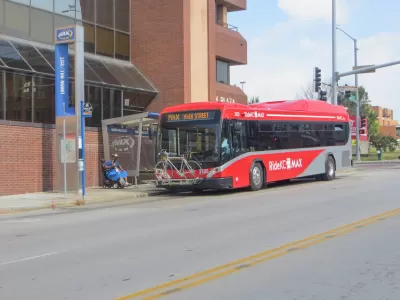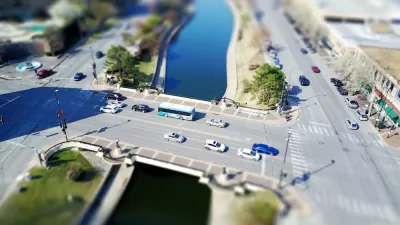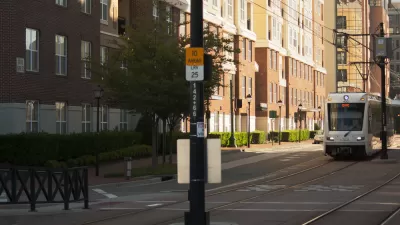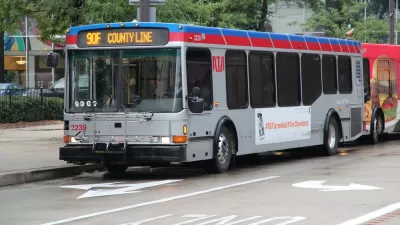The RideKC bus system is being redesigned on a high frequency grid.

The RideKC Next project released a Draft Network plan and launched a public review process earlier this month.
According to the RideKC website that announces the changes, the new Draft Network will offer the same amount of bus service, but reconfigured onto a high-frequency grid to "connect more people to more opportunity."
According to statistics cited on the same page, the RideKC Draft Network will bring 19 percent more people with a half-mile of a frequent bus route, defined as routes with headways of 15 minutes or better on weekdays and Saturdays, and 20 minutes on Sundays. "In an hour or less, the average KCMO resident could reach 7% more jobs on weekdays, and 22% more jobs on Saturdays on transit," according to the website.
According to the website, summarizes the Draft Network thusly:
The goal of the revised plan is to provide a simpler, easier and more efficient network that connects more people to opportunity. The proposed restructuring seeks to balance ridership and coverage considerations, while accurately reflecting the values of communities in Kansas City. This includes establishing a frequent grid in the core of the transit network, while also providing flexible services that cover larger areas and provide access to the system.
The public meetings for the Draft Network launched earlier this month but are continuing on Zoom or by phone into December. The city hired Jarrett Walker and Associates to design the Draft Network. Jarrett Walker tweeted news about the Draft Network release earlier this month.
FULL STORY: RideKC Next

Maui's Vacation Rental Debate Turns Ugly
Verbal attacks, misinformation campaigns and fistfights plague a high-stakes debate to convert thousands of vacation rentals into long-term housing.

Planetizen Federal Action Tracker
A weekly monitor of how Trump’s orders and actions are impacting planners and planning in America.

In Urban Planning, AI Prompting Could be the New Design Thinking
Creativity has long been key to great urban design. What if we see AI as our new creative partner?

King County Supportive Housing Program Offers Hope for Unhoused Residents
The county is taking a ‘Housing First’ approach that prioritizes getting people into housing, then offering wraparound supportive services.

Researchers Use AI to Get Clearer Picture of US Housing
Analysts are using artificial intelligence to supercharge their research by allowing them to comb through data faster. Though these AI tools can be error prone, they save time and housing researchers are optimistic about the future.

Making Shared Micromobility More Inclusive
Cities and shared mobility system operators can do more to include people with disabilities in planning and operations, per a new report.
Urban Design for Planners 1: Software Tools
This six-course series explores essential urban design concepts using open source software and equips planners with the tools they need to participate fully in the urban design process.
Planning for Universal Design
Learn the tools for implementing Universal Design in planning regulations.
planning NEXT
Appalachian Highlands Housing Partners
Mpact (founded as Rail~Volution)
City of Camden Redevelopment Agency
City of Astoria
City of Portland
City of Laramie





























